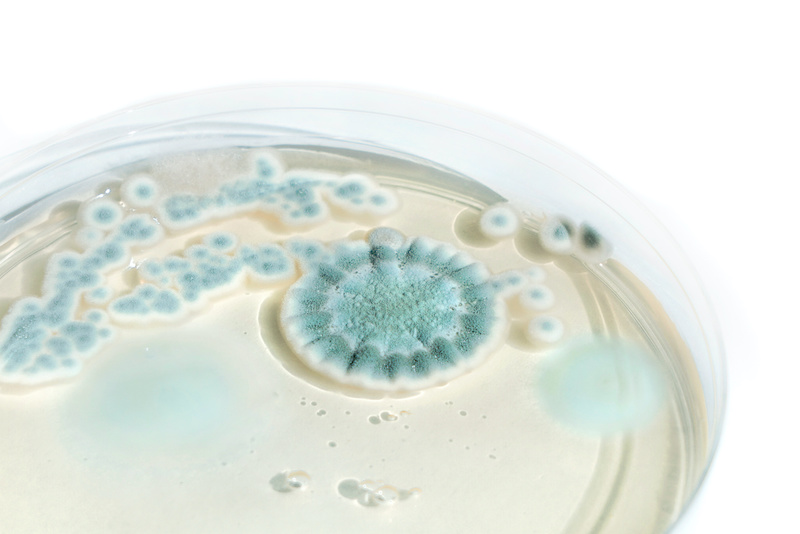White mold often indicates the early stages of a mold infestation in your home. Although it’s a term that can be applied to many common types of indoor mold, it’s never a good sign for the health of your family. Even in its early stages, mold growth can be dangerous. Here at MoldGone, we offer professional mold removal services to help you protect what you cherish most.
What exactly is white mold?
White mold is not a single type of fungus—many species will appear white at some point in their life cycles. Molds such as aspergillus, cladosporium, and penicillium can all appear white and then change to black, gray, or green, depending on their age. Other types of mold always appear white, as their spores lack pigmentation and color.
The color of the mold is not a sign that it is or isn’t dangerous. White mold spores can be just as harmful as any other mold spores. If you suspect there is white mold in your house, it is important that you take it seriously.
Why is white mold dangerous?
Just like any other color of mold, white mold presents unique health risks to your respiratory system. In particular, people with asthma and existing respiratory conditions face complications from mold exposure. Even people who do not have respiratory conditions can develop them as a result of exposure to mold spores.
Additionally, many people have allergies to mold, leading to skin, eye, and nose irritation. Mold exposure can also lead to shortness of breath and fevers in those exposed to large amounts of spores, even if they are not ordinarily sensitive to mold.
What should I do if my family is exposed?
If you discover that your house is infested with white mold, it is critical that you limit your family’s exposure. The health risks are quite dire, especially for those with respiratory issues. If possible, seek to stay with family or friends until you can have a professional team investigate and remove the mold from your home. Additionally, speak with a healthcare professional to review your family’s symptoms and receive medical treatment if needed.
What if it’s mildew and not mold?
Mildew is always white, and when many people see white spots on their walls they think that it is only mildew. However, failure to investigate further invites the risk of a costly mold infestation.
Even if it turns out that you do have mildew, there is still cause for concern. Mildew is still a type of mold, and can cause similar afflictions in humans who are exposed to it. It is important that you take appropriate steps to protect your home and family from both mildew and mold.
How can I remove white mold from my home?
When you discover mold of any kind in your home, it’s always best to speak with mold removal professionals. MoldGone’s certified mold remediation team can identify mold infestations, identify what work needs to be done, and ensure that your home becomes mold free. Call us today at 480-418-7228 to get a free quote.
Images used under creative commons license – commercial use (7/1/2022). Photo use courtesy of AdobeStock.



